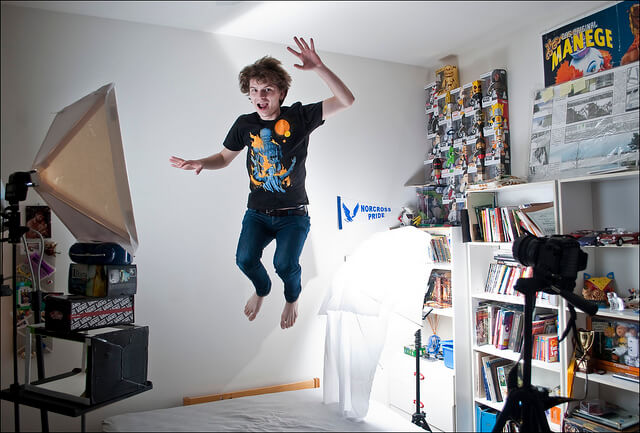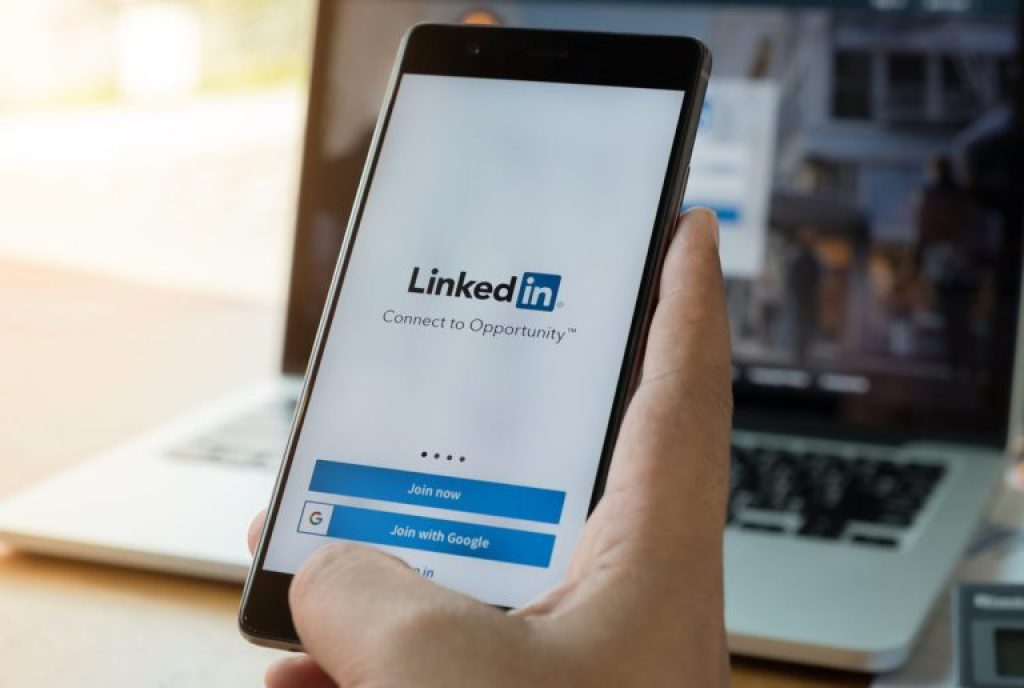What are the mobiles with the best cameras? What mobile would I buy for photography or video?
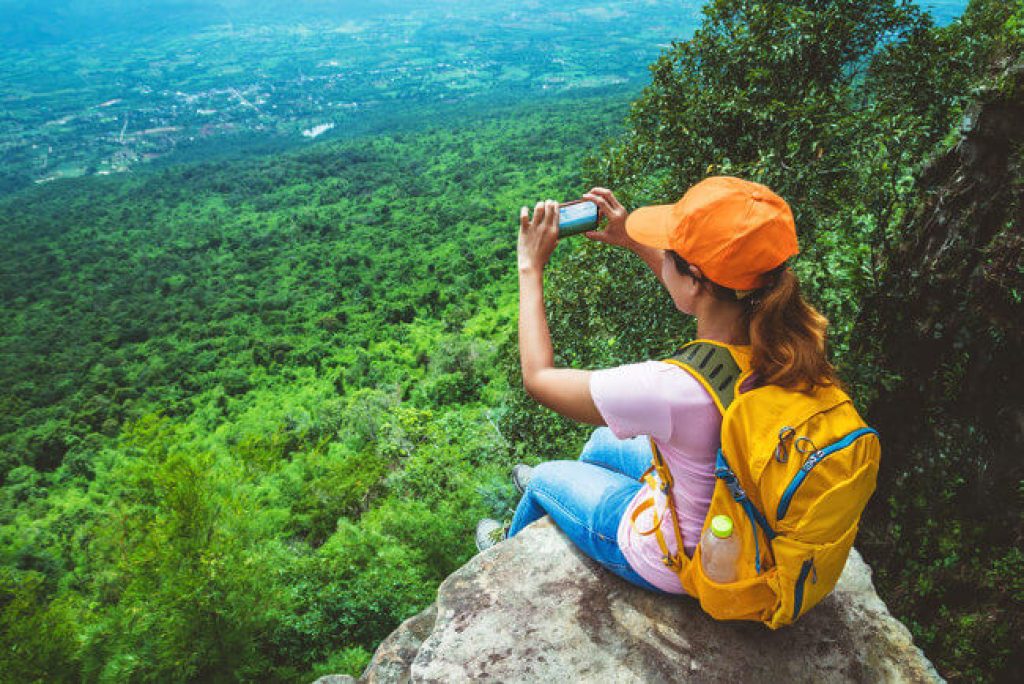
The best mobile phones for photography and video 2023

- Choose a mobile carefully
- Recommended phones for photography and video
Mid-range for photo and video
iPhone
Google Pixel
Xiaomi
Samsung
One Plus
Huawei - High-end mobile phone or camera?
- Criteria for choosing a good mobile phone for photography
- Criteria for choosing mobile for video
Choose a mobile for photo and/or video
Here you have a little more information about the technical criteria related to mobile phone cameras .
The summary would be as follows…
Virtually any current mid-range mobile offers a fairly good image quality if the lighting conditions are adequate.
All mobiles (of any range) include relatively small sensors with fairly similar performance. Performance is determined by physics: behavior of light (photons) and total sensor pickup area. Learn more about how image sensors work .
When the light conditions of the scene are not good, all the mobiles will have problems.
The final result will depend more on the processing that the mobile makes of these images : noise reduction algorithms, computational photography techniques, etc.
When we say that a mobile has a good camera, we are actually talking about a combination of different factors:
- The optics (the design and quality of the lenses that are part of the objective)
- The sensor (its technology, size and resolution, and associated electronics)
- And, above all, the image processing algorithms and systems , which in turn depend on the capacity (calculation power) of the processor .
From a certain mid-range, mobiles usually include very similar cameras: optics + sensor. It is very difficult for that part to make an appreciable difference between models.
What really makes the difference is the image processing part, which basically takes care of two aspects:
- Scene analysis
It is about the mobile determining the best configuration parameters for a certain scene: if it has to use HDR techniques (maximize dynamic range), deciding the appropriate shutter speed to avoid blurred images, minimizing electronic noise… The
mobile cannot know the context of a photo or video: what is the main subject, what do we really want to show, etc.
But through artificial intelligence systems (based on statistical data from many similar situations) or rules based on standard cases, you can get an optimal configuration for many typical situations. - Processed to generate the final image
The ‘image’ generated by the sensor has nothing to do with the final image. This is so in any digital camera. Signal processing must always be done to convert the sensor data (RAW / raw) into a final image ‘cooked’ with certain ingredients that make it something closer to what we see with our own eyes: contrast, adequate saturation , compress the dynamic range of the scene, etc.
On mobiles this process is much more importantbecause in some cases the final image is built from several intermediate images (eg night mode, HDR modes, etc.) or from combined information from the sensor or using advanced artificial intelligence techniques (portrait blur mode, etc.)
To imagine it in some way, the processing part would be responsible for 90% of what we would understand as ‘ quality ‘ of the final photo. The remaining 10% would correspond to the optical part and the sensor. Logically they are numbers that I am making up, but to give an idea of the relative importance of each thing.
The processing part can be integrated into different modules of the device.
Some mobiles include specialized image processing chips. For example, for focus systems, for HDR techniques, etc. These specialized modules are very fast.
The last layer of processing, the most visible, is the app, the camera application , the one we use to take photos and videos.
This application sometimes makes use of the phone’s native systems and other times it integrates its own processing algorithms.
That is why sometimes, simply trying different camera applications on the same phone, we get quite different results (different analysis and decisions for similar scenes, color management, dynamic range management, noise / grain management, etc.)
A mobile phone with a good camera is one in which all these links are perfectly integrated : optics > sensor > processing algorithms > computing power > camera application .
As the computing power (of the main processor -CPU- and of the specific processors for image: ISP / DSP) has such an important role, the highest-end mobiles are usually in the first positions of the lists of mobiles with ‘ best cameras’ .
For photography : the differences between high-end and mid-range mobiles will be rather subtle. There will be specific situations in which an appreciable difference could be noticed, but I think it is not that significant.
For video : It depends a lot on your needs and the features you are looking for. Here you can notice more differences because the processing of the video signal is much more demanding. For normal use (for example, if you only need 4K 30p without HDR), a mid-range mobile would probably be sufficient, especially if you make it work in adequate lighting.
Below you also have a summary of criteria or technical characteristics for photography and video .
Do they deceive us with the reviews…?
No, they do not deceive us, at least in more or less serious tests (there is everything, of course)
But I am going to comment on a typical case that I have heard thousands of times: ‘ in the review, such says that the camera of this mobile works very well at night, but the other day I took a night photo and it came out horrible ‘. The same applies to all the situations you can think of: portrait mode, dynamic range, focus…
It must be understood that the mobile is designed to handle a series of typical situations ‘ relatively well ‘. When your scene analysis is correct and the scene conditions are within the proper ranges (eg there is enough light), it is very likely that you will get a more than decent result.
If the analysis of the scene is not correct for whatever reason, or we manually choose a mode that does not correspond to the scene: the result will be ‘disastrous’ or it will be a result that we did not want.
It is very difficult to test the cameras of a mobile, because the part that influences the most (the analysis and processing part) cannot be isolated, nor does it operate according to fixed rules.
If you take 100 photos in very similar (but slightly different) conditions each model may have different behaviors and will get a hit rate and a miss rate.
You have to see the performance of the mobile in each situation as something statistical, as a percentage of hits . And within those hits, the final ‘quality’ will also vary.
Here the subjective criteria of each person also enter. We each have different criteria, tastes and demands: color / saturation, dynamic range management (compression), noise levels, noise processing (watercolor effect), etc.
When testing a mobile, comparisons can be made between models in similar situations. That’s not entirely conclusive either, because maybe the model A performs better in that particular situation, but it’s possible that the model B performs better in a similar situation.
But those comparisons and those tests can give an idea (especially to someone who has experience in camera analysis) of the consistency or performance of the mobile in different typical situations .
Keep in mind that in the mobile tests that you see there is always an important subjective component .
If you are interested above all in the photo and video part of the mobile: stay with the conclusions of the reviews of people specialized in cameras. General reviews (which analyze all aspects of the mobile) usually include more basic tests and comparisons.
Avoid very biased reviews or with simplistic conclusions: this mobile humiliates another , the Fulanito model sweeps the Menganito , the mobile with the best camera …
All this being said…
With a better mobile you will not take better photos
A photo is good for its content, for the moment it has captured, the place, the memory, the composition, etc. And it does not matter if it has been done with a 100-euro mobile or with a 6,000 professional-range camera
Image quality (sharpness, cleanliness, colors…) is only a secondary ingredient.
Image quality is only relevant when it spoils the content of the photo to such an extent that it is annoying. For example, an image with a lot of noise (grainy), or with a bad exposure that prevents a good appreciation of the content, or a moved or out-of-focus image, etc. But even in those cases it will depend on the content and the context.
No cell phone or traditional camera is going to magically make you take better photos.
The camera does not improve the ‘quality’ of a photo, it only influences the image quality .
In other words: the camera can make a photo worse or it can limit us and prevent us from taking a photo that we would like (for example, taking a photo in very low light without a tripod or taking a close-up of that bird that is 200 meters away). meters)
A ‘better’ camera or a mobile with a ‘better camera’ gives you an additional margin in certain situations or will make things easier for you in specific situations.
And other things being equal (eg for a certain amount of light) a mobile can give you a slightly cleaner or sharper image compared to another model.It is important to understand this. Many people buy the most expensive mobile phone or the most expensive camera thinking that it is going to do magic and that it will take perfect photos in any situation. And then they are disappointed because they do not get photos like the ones they have seen on
Instagram or those that appear in the brand’s advertising or the
influencer on duty.
The key to improving your photos is learning photography , knowing the limitations of your camera/mobile phone, understanding why it happens and what techniques you could use to try to achieve the results you are looking for (special modes, providing lighting, editing…)
Relying exclusively on the capabilities of the latest mobile phone or camera model… only generates frustration, because after 2 days a new model will appear that slightly improves the previous one, and advertising will sell it to you as the most wonderful thing in the world.
All this being said. I do not want to detract from what mobile manufacturers do.
The cameras that make up some mobiles, computational photography, image processing techniques, video capabilities, functions to make life easier in situations that are very complicated for any camera… It’s impressive.
What I want to convey is that you try to choose wisely :
- Understanding what characteristics and what real advantages a certain mobile will bring you
- Understanding its limitations: no mobile is perfect or ‘the best’
- That in many situations your knowledge will be much more important than the capabilities of the mobile
- Think of your phone as a tool, not something magical that will take amazing photos and videos on its own.
And very important too…
A mobile is not only the camera
What I mean by this?
That the cameras of a mobile are just one more function within a device that is used for many things.
Choosing a mobile will depend on these other criteria: ecosystem, applications to which I will have access, power for applications that I use at work, ability to play, screen, size, battery…
And of course the price.
Choosing a specific model is always a compromise between many factors.
Mobile phones recommended for photography and video
Quick summary to have a first approximation.
mobile for photography
Huawei ( P30 , P40 , P50 …) are excellent for photography, but they have a small problem: due to political issues between Google and Huawei ( USA / China), devices from P30 onwards do not include the Google Play Store or related applications With google. They can be installed doing some tinkering, but let’s say that I wouldn’t recommend them for a user who doesn’t want to complicate much.
iPhones are also an excellent option. They don’t always have the ‘best cameras’ if we compare them one by one with other high-end models from other brands. But they are usually models that offer a very high consistency: between their cameras, in typical situations, etc. To put it in some way: they are a safe bet . They usually have a very good main camera (wide) and a very good front camera (selfie)
Samsung ‘s high-end (Galaxy S series: S20 , S21 , S22 …), is also usually a safe bet in the Android world. The benefits are very similar to those of the iPhone of a similar generation. The differences would be more in subjective issues, for example color management, saturation, etc. The native camera application is very complete and allows you to have control in situations where the advanced modes do not work well or do not do what we want at that moment.
The Google Pixels are also a benchmark in photography. Its main strength is the integration of the Google camera application (Google Cam / GCam) which has traditionally had some of the best image processing algorithms. They usually have an excellent main camera. The other cameras usually offer good results but in general they would be a bit average.
I really like the One Plus for photography. In general, its image processing algorithms would perhaps be a tad behind the iPhone or the Pixel of the same generation, to give an example that serves as a reference, although many subjective criteria are involved here and in day-to-day photos it is very difficult to find appreciable differences. But One Plus has always paid a lot of attention to the photographic part, and the native camera application is very complete (unlike that of the iPhone for example) and allows practically complete control of the configuration parameters.
Xiaomi has traditionally been a brand that has undervalued the photo and video part. But in recent generations it has brought to the market models that really compete face to face with the brands that I have previously mentioned. The Mi 10 series (Mi 10 Pro and Mi 10 Ultra ) marked a turning point and placed the high-end Xiaomi at the top of mobiles with good photo and video capabilities. Perhaps its algorithms are not as consistent as those of the iPhone, for example, but in general the cameras do a very good job.
Why do the high ranges appear on that list?
Virtually any current mid-range mobile already gives you a very good starting point, both for photo and video .
Your knowledge in photography (eg understanding light conditions), and above all knowing the limits of your equipment and in which situations certain modes, techniques work best… all of this is much more important than having the latest model .
But…
The premium models are the ones that can give that little extra in complicated situations (better dynamic range management, more advanced algorithms for night mode, portrait, etc.). They are the ones with the most and best updates and in the long term (remember that much of the photo and video performance is a software issue). They are the ones that usually have a larger independent development community behind them.
The Ultra models (or the nomenclature used by each brand) are usually the most advanced, include an additional camera, better features, etc. but for day to day the difference with the base versions of the series (eg Pro) are not so relevant.
No need to go to the latest version . The models of one or two previous generations offer excellent results in the photo and video part. And they are also highly tested models, with their firmware updates, etc. that correct and improve any small initial failure.
So (for photo and video) it seems like a good idea to choose a base model from some previous generation . You will have an excellent device with a very good value for money.
mobile for video
If you are looking for a mobile especially for video, for example if you are a content creator or you simply make a lot of video and want a certain quality…
The iPhone I think today would be the reference. They are the ones that will give you more than acceptable results in most typical situations. Again, the word would be ‘ consistency ‘. The native iPhone app is a bit limited (in terms of having more control in certain situations), but there are third-party camera management apps that will give you much more control.
The Samsungs (the Galaxy S series for example) would be on a par with the iPhone in video. In certain situations one will give better results, in other situations it will be the other. But I think they would also be a safe bet if you prefer an Android mobile.
From my point of view, the other brands (or series) would be a tad below, generally speaking.
But…
If lighting conditions are important in photography, in video they are more than important, they are critical. Virtually any current mid-range mobile , with correct lighting, will offer excellent video quality.
Lighting is essential and audio is essential. No mobile (or any camera) picks up sound with good quality (except in very specific situations, if we have the sound source very close to the mobile, something that does not usually occur when we record video), so the use of external microphones and the environmental conditions are going to be more important than the technical characteristics of the mobile.
If you are going to create content (more or less serious video production), there are many external factors that are going to have a greater influence than the ‘ quality ‘ offered by a certain model or brand camera.
Some tips for recording video with mobile
In any case, the models and brands that I have mentioned above in the photo section also tend to have very good performance on video.
Mid-range mobiles for photo and video
I’m going to start with some recommendations in the mid / upper mid range that may be interesting.
Most of the mobile phones in these ranges already include more than decent cameras, powerful processors and processing algorithms similar to those of the highest ranges.
Manufacturers usually reserve some features for their premium devices , but in any case, for normal photo and video use, they are usually models that perform very well and cover most of the typical situations.
Of those that I have had the opportunity to try and see references, I would perhaps stay with one of these models:
Google Pixel 6a
It is a mid-range model, smaller than its older brothers.
The main camera and the wide-angle camera (ultra wide) offer very good performance in both photo and video (4K).
They have Google’s image processing algorithms and you can get a lot of use out of them.
The front camera (selfie) is average and offers decent quality, without more.

Last price check: 00:02h (amazon.es)

Last price check: 11:53 p.m. (amazon.es)

Last price check: 11:56 p.m. (amazon.es)
Samsung Galaxy A53
Or the Samsung Galaxy A52s , which is very similar.
It is a fairly complete device and I think that for a normal user who is looking for a little extra in the photo and video part it can be very interesting.
The advantage of the Samsung with respect to other manufacturers in this mid-range would be mainly in the part of image processing, for example in the compression of dynamic range in somewhat complicated scenes.
The main camera and the wide angle offer good performance.
The main camera is undoubtedly the best on the phone, with a 64Mpx sensor that generates 16Mpx photos (grouping the information from 4 cells) in standard mode.
The main camera, the wide angle and the front camera offer 4K video
Then it includes a 5Mpx macro camera (not really useful for day to day) and an auxiliary camera to help portrait mode.

Last price check: 12:17 p.m. (amazon.es)

Last price check: 12:21 p.m. (amazon.es)

Last price check: 2:30 p.m. (amazon.es)

Last price check: 12:28 p.m. (amazon.es)

Last price check: 09:10 a.m. (amazon.es)
iPhone mobiles for photography and video
iPhones have always been a bit of a reference in photography and video, and they still are today.
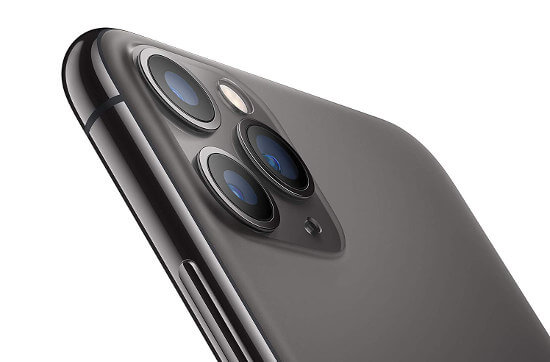
They are usually high-end models and therefore include quality hardware: the optical part, sensor… Although Apple is usually quite conservative and there are models from other brands with more technologically advanced hardware and with better features on paper.
The strong point of the iPhone (photo and video) is that all the software, including the operating system and low-level functions, are designed and thought for a certain hardware .
We have already commented that in mobile phones what makes the difference is the processing of the information that comes from the sensor. That is why the integration of hardware and software is so important .
Are then the iPhone the best phones for photography and video?
No. Not necessarily. We could say that they are models that allow you to play it safe.
Buying an iPhone is in a certain way a guarantee that you are going to get photos with a very good technical quality for what a mobile can get (for a similar technological generation), and the same goes for video.
I’m not particularly a fan of Apple and its products. But my general opinion about the iPhone is that they are very good quality and reliable devices, in the sense that they are somewhat predictable and what they do they do well (I’m talking about the photography and video part).
In video they are also very consistent and from my point of view they are a little step ahead of the others (if we take into account their overall behavior in a lot of different situations)
recent models:
- iPhone 14 series (2022)
- iPhone 13 series (2021)
- iPhone 12 series (2020)
- iPhone 11 series (2019)
Any model of these series will give you a good result in the typical situations that we usually find.
The Pro and Pro Max versions usually include the best features and/or extra functions for photo and video.
But keep in mind that some of these extra features only make a difference in very specific situations: low light, night portrait, etc.
If you are going to choose the mobile especially for photography and video, and you are not looking for very specific features, I would choose an iPhone from one or two previous generations. You will have very good benefits and the value for money will be much better.
Apple is usually very conservative and changes between generations are usually incremental.
In any case, also value the rest of the characteristics. It is a mobile, a device that is used for many things and with which you are supposed to ‘live’ in your day to day. For example, size and weight can also be determining factors.
Indicative prices of the iPhone 13:

Apple iPhone 13 (128 GB) – in Star White
Last price check: 9:53 p.m. (amazon.es)

Apple iPhone 13 (128GB) – Blue
Last price check: 9:52 p.m. (amazon.es)
Link to the Apple store on amazon.com
Here you have more information about the iPhone 12 for photography and video
And here information about the iPhone 11 for photo and video
Google Pixel phones
The most important feature of the Google Pixel in regards to photography and video would be in the part of computational photography and image processing.
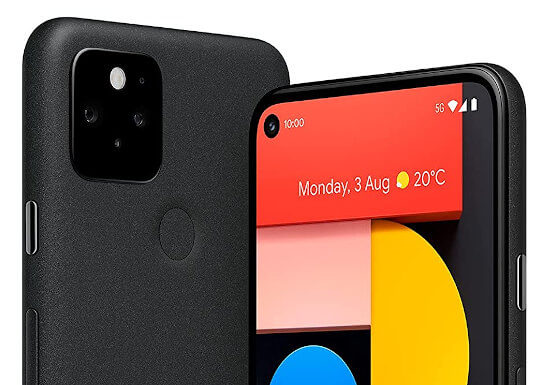
We could say that it would be a philosophy similar to that of Apple with its iPhones: the Pixels are designed so that there is perfect integration between the camera hardware (sensor) and the subsequent layers of image processing, including the outermost layer of management. camera: the GCam (Google Camara, the camera management application)
The performance of the Pixel, especially in photography , has always been very good. In some aspects it has marked the line to be followed by the rest of the brands.
Recent models of the Google Pixel:
- Google Pixel 5 Series (2020)
Pixel 5
Pixel 5a - Google Pixel 6 series (2021)
Pixel 6
Pixel 6 Pro
Pixel 6a (2022)
Overall, the Pixels are still excellent options for photography, right up there with the iPhone and Samsung S.
Google mobile cameras continue to have highly advanced image processing algorithms behind them.
Perhaps they no longer have that competitive advantage over the software of other manufacturers, but it is still one of the benchmarks in photography.
In video they offer very good results, although I think their forte is photography.

Smartphone Brand Google Model Pixel 6 128GB Kinda Coral
Last price check: 10:36 a.m. (amazon.es)

Google Pixel 6 128GB + 8GB RAM Factory Unlocked 5G Smartphone (Sorta Seafoam) Green
Last price check: 11:16 a.m. (amazon.es)

Last price check: 11:20 a.m. (amazon.es)
Xiaomi phones for photo and video
Despite the fame that Xiaomi mobile phones have had for photography, the brand’s most recent models (starting with the Mi 10, and especially in the upper-middle ranges) take much more care of the camera section: more advanced cameras and better integration with the system.
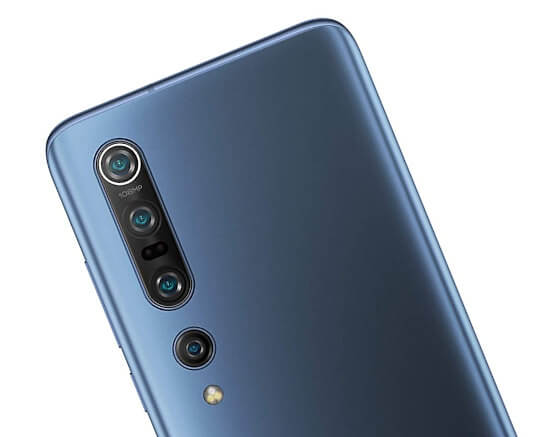
Some recent models that I like, especially for photography:
- Xiaomi 11T Pro (high mid-range, 2021)
- Xiaomi 12 Pro (high-end, 2022)
- Xiaomi Mi 11 Pro (high-end, good value for money, 2021)
- Xiaomi Mi 11 Ultra (high-end, 2021)
For video, I think they are still a tad behind Apple and Samsung at the same range, more in specific details than in important issues.
If you are looking for a very specific mobile for video, I think I would try to go for a previous generation iPhone model or one of the high-end Samsung ones, but in any case, these Xiaomi phones are going to give a more than decent result.
OnePlus phones [1+]
OnePlus is a manufacturer that has historically paid a lot of attention to the photography and video part of its devices.
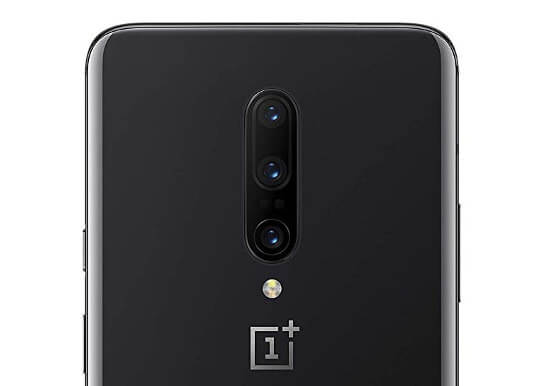
Some models with good photo and video features:
- OnePlus 8 Series (2020)
OnePlus 8
OnePlus 8 Pro
OnePlus 8T - OnePlus 9 Series (2021)
OnePlus 9
OnePlus 9 Pro
OnePlus 9R
All models offer very good performance in photography and video, but the Pro versions usually include the most advanced cameras.
The OnePlus 8 Pro represents a leap in performance compared to the previous generation (OnePlus 7).
The main camera mounts a 48Mpx sensor (which can also be scaled to 12Mpx) but with a surface area of about 60 mm2 . In other words, practically 1 extra light stop, which is quite noticeable in low light situations and when managing the dynamic range.
It also includes an ultrawide camera with a 30 mm2 sensor , offering excellent quality wide-angle images even in low light conditions.
Both cameras include night mode, which greatly improves detail and quality in those low-light situations.
Those large sensors are also noticeable in video, both when recording in low light and in situations with a very wide dynamic range.
In video, it combines the optical stabilizer (OIS) with the digital stabilizer.
It is a model that competes face to face with much higher priced mobile phones (the iPhone 11 series, the base versions of the iPhone 12, the Galaxy S20 series including the S20 Ultra…) especially in those situations with less light and night mode it offers impressive results due to the combination of sensor and processing algorithms.
More information: OnePlus 8 Pro – Cameras and photo and video features

Last price check: 00:57h (amazon.es)

OnePlus 8 Pro – Smartphone 128GB, 8GB RAM, Dual Sim, Onyx Black
Last price check: 00:57h (amazon.es)
Both the OnePlus 8 and OnePlus 8T include a camera system similar to the previous generation OnePlus 7 Pro .
They are excellent options for photography and video, but they would be that little step behind the OnePlus 8 Pro .
The OnePlus 9 Pro (2021) is quite similar to the OnePlus 8 Pro in terms of the performance of its main camera, with very similar specifications.
It improves the ultrawide camera a bit, with a sensor of about 50 mm2 of capture surface, which would be noticeable when managing the dynamic range, for example if we do landscapes in broad daylight or situations with a lot of contrast between lights and shadows. Also when we want to take wide open shots in low light situations or night scenes.
The OnePlus 9 series includes the collaboration of Hasselblad , one of the most renowned manufacturers of high-end cameras, but from my point of view it is more of a marketing issue, as is the case with other mobile brands that use Leica, Zeiss, etc to give that ‘professional’ photography image.
The OnePlus 9 Pro includes faster processors and would be noticeable for example (compared to the OnePlus 8 Pro) in night mode. The 9 Pro offers images with a tad more detail, but you have to magnify the image a lot to see the difference.
In video it also improves, with the possibility of recording 8K / 30p and 4K / 120p.
In general, for normal photo and video use, I think the OnePlus 9 Pro and OnePlus 8 Pro offer pretty much the same thing.
If you don’t need those extra features (8K or slow motion in 4K) I would choose the model that I find at the best price.

Last price check: 11:19 p.m. (amazon.es)

Last price check: 10:19 p.m. (amazon.es)

Last price check: 11:19 p.m. (amazon.es)

Last price check: 11:01 p.m. (amazon.es)

Last price check: 10:38 p.m. (amazon.es)

Last price check: 00:59h (amazon.es)
Huawei phones for photo and video
Huawei is one of the mobile manufacturers that has historically invested the most in the photography and video section.
Practically all their mobiles offer very good benefits. Its components are usually of very high quality both in the optical part (Leica), as well as the sensors and processors, and especially the software that is responsible for getting the best possible performance from the whole set.
But you have to take into account the ‘problem’ with Huawei models after May 2019: due to the trade penalty with the USA, Huawei cannot preload new phones with Google applications: Play Store or Google Assistant, YouTube, Maps, etc That is to say, they are fully functional Android mobiles, but they do not include these serial apps in their most recent models.
There are tricks to avoid these limitations (which do not affect the photography and video part, but do affect the day-to-day use of the phone) but it is still a small nuisance, especially for users who do not want to complicate their lives with issues techniques.
Today I would stay with the Huawei P30 or P30 Pro. This series includes all Google applications like any other Android mobile, you don’t have to do anything and the updates are like any other mobile.
Today it can be obtained with a very good value for money, and especially for photography it continues to be an excellent option from my point of view.
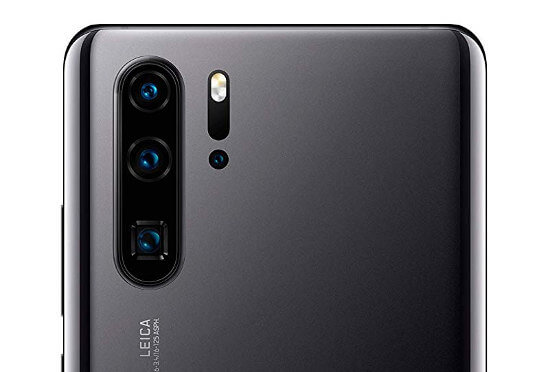
Technical characteristics (Huawei P30 Pro):
- Main rear camera :
40Mpx (default rescaled to 10Mpx)
Sensor 1/1.7 inch ( 43 mm2 ) / PDAF
(RYYB optical filter instead of standard Bayer RGGB pattern)
Lens 27mm equivalent – f/1.6
Optical Image Stabilizer (OIS)
4K/30p | 1080 / 60p
1080 / 120p (slow motion)
720 / 240p | 960p (super slow motion) - Telephoto rear camera :
8Mpx
Lens 125mm equiv. f/3.4 / PDAF
(optical zoom to main camera: approx. 5x)
Optical Image Stabilizer (OIS)
4K / 30p | 1080/60p - Wide angle rear camera (ultra-wide)
20Mpx
Lens 16mm equiv. f/2.2 / PDAF
Optical Image Stabilizer (OIS)
4K / 30p | 1080/60p - Front camera
32 Mpx 28mm equiv. f/2.2 (wide)
1080 / 30p
Digital Image Stabilizer - Special functions or modes
Night mode ( Night Shot )
Portrait mode
Long exposure mode (silky water / silk effect in water)
Super macro
mode HDR mode - Does it allow manual mode? Yeah
Huawei P30 vs. P30 Pro:
The main camera has the same sensor, but the lens has an aperture of f/1.8 (f/1.6 on P30 Pro).
The telephoto camera has a lens with an 80mm equivalent focal length (approx. 3x) but is brighter: f/2.4 (125mm f/3.4 on P30 Pro)
The wide-angle camera (ultra wide) is 16 Mpx and its lens is 17mm f/2.2 (16mm f/2.2 on P30 Pro)
The P30 does not include a ToF sensor.
For the rest, in terms of image quality and features in photography and video, the two versions offer very similar results.
In photography, the Huawei P30 are excellent. The RYYB filter on the main camera tends to generate slightly warmer images (colors more towards yellow/red) and in very specific situations can create magenta casts. But in general the quality is very good (with adequate lighting like all mobiles)
In low light conditions its performance is above average, it is one of the best mobiles in this section even without using night mode.
And you can get a lot out of the 3 rear cameras, especially the telephoto lens to get that x5 optical zoom (x3 on the P30) with very good sharpness.
In video the benefits are good, but not excellent. That is to say, the image quality is good and would be at the level of a mid-range mobile, but of course, seeing the quality that it offers in photography in most situations gives the impression that the video has room for improvement in future updates. firmware.
Positive points of the Huawei P30 Pro for photography and video:
- The main camera, used in the default resolution (10Mpx) offers excellent image quality.
- Telephoto lens with focal length 125mm equiv. (5x optical zoom). Very good image quality with that focal length and also the 10x hybrid zoom offers very good sharpness (although it is still a digital crop, perhaps with some processing)
- 4K video at 30p
- The combination of the 3 rear cameras gives a lot of flexibility in day-to-day use
- Night mode is excellent
- Very good portrait mode by combining the cameras and the ToF sensor to generate the background blur
Less positive points:
- In certain circumstances the sensor with RYYB filter of the main camera can generate some magenta cast
- Does not record 4K 60p
- Indoors or in low light the secondary cameras do not perform as well, it is preferable to use the main camera in auto mode (in the standard configuration of 10Mpx) or in night mode
- The front camera only records in 1080 /30p (although it offers very good performance in most situations)
Photography rating: 9 /10
Video rating: 7.5 /10
![Huawei P30 - 6.1" Smartphone (Kirin 980 Octa-Core 2.6GHz, 6 GB RAM, 128 GB internal memory, 40 MP camera, Android) Aurora Color [Imported version]](https://m.media-amazon.com/images/I/41RkKZxBJ4L._SL160_.jpg)
Last price check: 11:25 p.m. (amazon.es)
![Huawei P30 - 6.1" Smartphone (Kirin 980 Octa-Core 2.6GHz, 6 GB RAM, 128 GB internal memory, 40 MP camera, Android) Color Black [Imported version]](https://m.media-amazon.com/images/I/416e0yb8Z3L._SL160_.jpg)
Last price check: 11:24 p.m. (amazon.es)
Huawei P30 on amazon.es (different models)
Samsung Galaxy phones for photo and video
Samsung has also been characterized by taking care of the photography and video part of its devices.
In fact, Samsung is one of the leading manufacturers of mobile image sensors along with Sony.
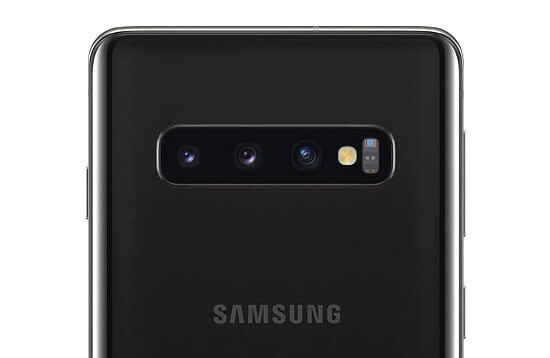
The Samsung phones with the best photo and video features are usually the high-end models: the Galaxy S10, S20, S21, S22 series… and the Galaxy Note series.
- Galaxy S20 series (2020)
Galaxy S20
Galaxy S20+
Galaxy S20 Ultra
Galaxy S20 FE ( slightly more basic version ) - Galaxy S21 series (2021)
Galaxy S21
Galaxy S21+
Galaxy S21 Ultra
Galaxy S21 FE ( very good photo and video features ) - Galaxy S22 Series (2022)
Galaxy S22
Galaxy S22+ (Plus)
Galaxy S22 Ultra
Any of these models offers very good features in photography and video.
The Galaxy Notes are models for a more specific user, who is looking above all for the screen and the experience of using the S-Pen (digital pencil).
The Galaxy S20 , S20+ and S20 FE include a 12Mpx main camera, about 40 mm2 (compared to the 25 mm2 of the S10)
The Galaxy S21 and S21+ also include a 12Mpx camera and 40mm2 capture area.
The Samsung Galaxy S22 and S22+ have a 50Mpx main camera, with a 50mm2 capture area.
More information about the cameras of the Samsung Galaxy S22
From the S20 series (S20, S21, S22…) the mechanical diaphragm of the S10 is lost, in these models the lens aperture is fixed.
In all these models the features are similar and the differences, which are subtle and progressive, would perhaps be more in the image processing part (special modes: portrait, night, etc.) than in the sensor size.
The Ultra versions include a larger sensor in the main camera, about 70 mm2 and 108 Mpx resolution, which helps in situations with less light and improves image quality a bit in some specific situations (although the part is still more important). image processing).
The Galaxy S21 Ultra and Galaxy S22 Ultra also include a periscope-type telephoto camera , which achieves a 240mm equivalent focal length and offers incredible results when compared to other models that have to use digital zoom (image cropping and rescaling).
I think that for 99% of normal use and for typical situations the base models, for example the S22 and S22+, already offer excellent performance.
If we only stay with the photographic and video part, I would perhaps choose one of the intermediate models: S22, S22+, S21, S21+, S20, S20+, even the S10 and S10+ if you find them at a good price they seem very interesting for a normal use.
Cameras of the Samsung Galaxy S22, assessment for photo and video
Cameras of the Galaxy S20 models. Valuation for photography and video

Last price check: 07:38h (amazon.es)

SAMSUNG Smartphone Brand Model Galaxy S22 5G 256GB Phantom Black
Last price check: 07:35 a.m. (amazon.es)

Samsung Galaxy S22 5G Mobile Phone 128GB SIM Free Android Smartphone Ghost White
Last price check: 07:40 a.m. (amazon.es)

SAMSUNG Smartphone Brand Model Galaxy S22 5G 128GB Pink Gold
Last price check: 07:45 a.m. (amazon.es)

SAMSUNG Smartphone Brand Model Galaxy S22 5G 256GB Pink Gold
Last price check: 07:44h (amazon.es)

SAMSUNG Galaxy S22 Dual Sim 8GB RAM 256GB Black EU
Last price check: 07:47h (amazon.es)

Last price check: 10:37 a.m. (amazon.es)

SAMSUNG Smartphone Brand Model Galaxy S22+ 5G 256GB Phantom Black
Last price check: 07:39 a.m. (amazon.es)

Last price check: 11:17 p.m. (amazon.es)

Last price check: 11:09 p.m. (amazon.es)
High-end cell phone or camera?
This is an interesting question.
In this article I comment a little more in depth about the differences between mobile phones and traditional cameras , in regards to image quality and other aspects.
The summary could be:
- A camera with a large sensor will always generate a higher quality image : better signal-to-noise ratio, greater dynamic range, etc. It will give us better raw material to work with later (development / editing)
- A camera with interchangeable lenses offers us much more flexibility from an artistic point of view (focal range, physical diaphragm, specialized lenses for each situation…)
- A compact camera with a good lens gives us the advantage of optical zoom without losing quality (compared to the digital zoom -cropping- that a mobile usually does), high-end compact cameras include larger sensors and give us more control in certain situations.
- We always carry a mobile with us . It is a camera that accompanies us practically 24 hours a day, 365 days a year. That is the most important advantage of a mobile . In that aspect it is unbeatable.
- The mobile offers us a good balance between image quality, ease of use and price
- The workflow on mobile is much faster, especially when it comes to posting on social networks, automatic backup of images and videos, etc.
- The camera (or cameras) of a mobile phone covers enough of the most common situations that we encounter on a day-to-day basis (if there is good lighting).
- The mobile can limit us in specific situations or for certain types of photography and video
It must be taken into account that the mobile is a multipurpose tool (which includes one or several cameras) while a traditional camera is a specialized tool.
In general, the mobile is usually used in automatic mode (the mobile makes the decisions and configures the exposure parameters). You can use the mobile in manual mode but it is not usual and it is usually a bit more cumbersome than in a camera (in addition, the objectives of mobile phones do not usually have a diaphragm to control the aperture, there are fewer parameters on which to act).
Cameras , especially interchangeable lens cameras (reflex and mirrorless), are designed to give control to the user : buttons, dials, configuration parameters… They can be used in automatic mode, but that way you lose some of the camera potential.
The philosophy of the cameras is also based a bit on the fact that they give you good raw material (eg the RAW file ), which the user can then edit to get the final version to their liking.
To put it in some way, a mobile is designed to give you the final photo, cooked and plated . A standard camera gives you a raw or undercooked photo , so that the user can finish it to their liking in the process of digital developing and editing. With a camera you can also get a fully cooked photo ( SooC – straight out of camera ).
For certain types of photography, a standard camera, especially with interchangeable lenses, would be the most suitable tool: long exposure photography, flash photography, sports photography, bird photography, wild animal photography, astronomical photography, macro photography…
The user experience is quite different too, but this is already something more subjective.
What criteria are important to choose a good mobile phone for photography?
Here you have much more information about the technical characteristics and criteria for choosing a mobile with a good camera .
Also remember what we have discussed: computational photography and image processing are the aspects that will make the difference in the final result of photos and videos. Especially when the conditions of the scene are not perfect.
With this in mind, here is a summary of technical parameters that may be important when choosing the model:
- Number of cameras .
More flexibility and more image quality in the native focal length of each camera. But keep in mind that some cameras are simply filler and are not useful, for example macro or telephoto cameras with very low resolution. - Aperture of each camera (of the objective of each camera).
The lower the number (eg f/1.8) the more light that camera will collect. Mobile cameras use small sensors that need a lot of light to work in their optimal zone. - Resolution (Mpx).
It is not an important parameter, about 10Mpx is more than enough in the vast majority of cases.
Sensors with very high resolution (48Mpx, 108Mpx, etc.) actually group pixels to generate lower resolution images (eg 12Mpx) but with better quality if the light is not perfect.
More important than resolution is the size of the sensor. - Sensor Size
Larger sensors have an advantage or give a little more headroom in certain situations.
For example, in situations with less light, in night modes, to better manage the dynamic range of the scene, etc.
It is an important parameter, but keep in mind that the differences are always gradual and subtle. And it will depend a lot on the image processing layers.
Other things being equal (same technology, similar processing, same scene…) a larger sensor will improve dynamic range and generate cleaner images (less noise/grain). - Focus system .
Most mobiles include phase detection focusing technology, PDAF (very fast), usually in combination with contrast detection focusing, CDAF (very precise).
Some models include a ToF (Time of Flight) sensor, a kind of radar to accurately measure the distance to objects.
In some models a small laser is used to calculate the distance. - Front camera .
The main rear camera is usually the one with the best features.
If you plan to take many selfies and want a certain image quality, you should take into account the characteristics of the front camera: sensor size, focus system, video characteristics… - Manual mode .
If the mobile (its operating system) allows manual control of all parameters, especially ISO and shutter speed .
Normally all mobiles allow at least partial control of the configuration parameters of their cameras.
It is also useful that the mobile allows the management of parameters by third-party camera applications. - special modes .
For example, portrait mode (emulates background blur), night mode (allows you to take photos of static scenes with very little light, even freehand), astrophotography mode (specifically for star photography), etc.
Keep in mind that many of these special modes are not going to be used much on a day-to-day basis.
They are interesting, yes. But you have to assess what real use you will give it and if it is worth investing more in a device just because it includes a very specific mode.
Criteria to choose a good mobile for video?
The criteria would be basically the same as those I have commented for photography, but the video part also has its own criteria:
- Resolution (4K/1080) .
If you record at 4K we have an image with more detail (if you want to publish in 4K) and above all more flexibility when editing if we want to publish Full HD.
But we need more storage and more powerful equipment to edit (whether you want to edit from your mobile or from a computer) - FPS (frames per second).
The current minimum standard would be 4K /30p.
If you need to post in 4K you might be interested in a phone that allows 4K/60p depending on the style of the video or to include high resolution slow motion shots, but in general with 4K/30p you should have enough quality for both posting in 4K and editing. and rescale to 1080p. - Image stabilizer .
If we are not going to use an external stabilizer (more effective) a good internal stabilizer will do us good.
Normally they are digital stabilizers (EIS – Electronic Image Stabilization), but some mobile cameras integrate an optical stabilizer (OIS – Optical Image Stabilization) - Slow motion modes .
Most of today’s mobiles include special slow or super slow motion modes (120p / 240p / 480p / 960p) - HDR in video.
HDR techniques allow you to expand the dynamic range of images (it is really about compressing the dynamic range of the scene in the image, to have more detail in the shadows and more detail in the brightest areas of the scene).
Some mobiles can generate video with static HDR (tone mapping in Rec. 709) for use on all devices and others can generate specific HDR for devices with HDR support (HDR televisions and monitors) following different standards: HDR10, HDR10+… (Rec 2020)

